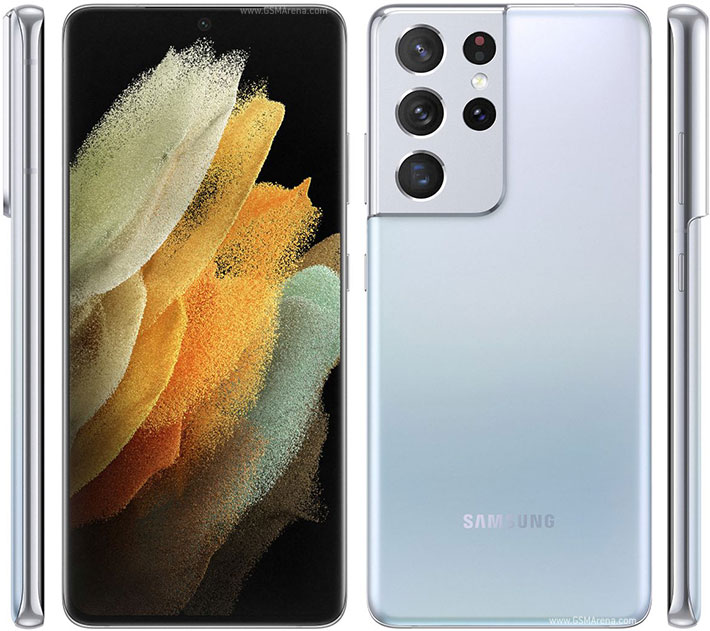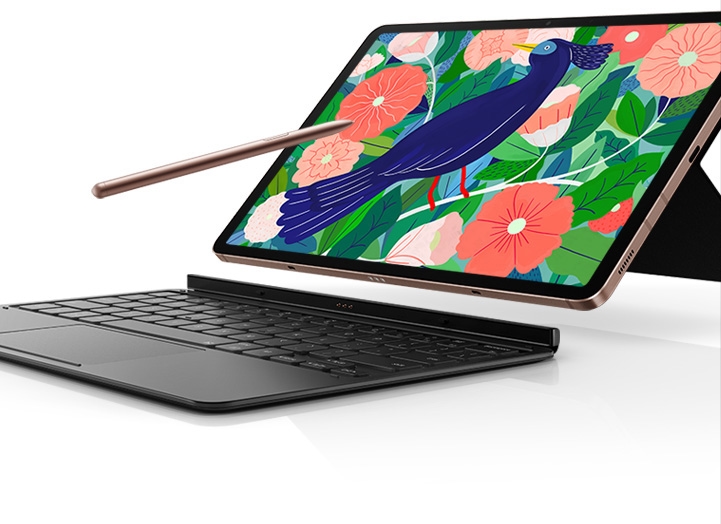Samsung Galaxy S22: Rumored pricing, specs, and expectations about the lineup
The Korean giant- Samsung- flaunted their Galaxy S21 last year and ensured it was a refinement rather than a redesign of its predecessor, Galaxy S20. This has proven that they never rest on their laurels when it comes to releasing their new flagship phones. And the unpacked Samsung galaxy event happening this February affirms this. Luckily for the impatient people, rumors have kept us updated on what’s coming. And based on everything leaked so far, we already have a relatively decent sense of what Samsung has in store for its flagship phone lineup.
If you’re still wondering what the event will be for: well, its entry of the Samsung Galaxy S22 series to earth. Of course—and as always— the wait has brought up rumors and leaks, giving us a mind-glimpse of the phone. One rumor suggests that the s series lineup will also be joined by the Galaxy tablet S8, a predecessor of the tab S7 that debuted in 2020.
But will the Galaxy S22 be cheaper? What exclusive feature will it offer?
All the important rumored information provided down below will paint a picture of what’s in store.
So, read on…
/cdn.vox-cdn.com/uploads/chorus_asset/file/23135171/s22U.jpg)
When will the Samsung Galaxy S22 get released?
Samsung, at long last, confirmed the release date of the Galaxy S22 lineup. The unpacked event termed “Epic Standard” will happen on the 9th of February 2022. It will commence at 10 a.m. ET / 7 a.m. PT / 3 p.m. GMT (or 1 a.m. AEST on February 10) as a wholly virtual event.
For those living in the US, chances will be that they can purchase the device prior to its launching event. In fact, it’s already rumored that the website has an open reservation for both the tab S8 and the smartphones.
Counteracting this information, another curious leaker hinted that: given Samsung’s habit of waiting two weeks between announcing a handset and putting it on sale, the availability of the device is unknown. However, the leaker also pointed out that it could be on the 24th of February, but who knows?
Last year the S21 was announced on the 14th and was put out for sale on January, the same month, 29: a two-week difference—let’s hope it will be the same this year
However, if you plan on getting either of the series, ensure you pre-order fast, since, as recently leaked, it could take up to three months to get delivered due to the high demands.
The rumored price
The Samsung Galaxy S21 range debuted at a lower price than the S20, but will the S22 be even cheaper? If the leaks are to be trusted, the answer is probably no.
We don’t know for sure how much the Samsung Galaxy will cost. And referencing the Samsung Galaxy S21, which began at $799 / £769 / AU$1,249, the S21 Plus, which began at $999 / £949 / AU$1,549, and the S21 Ultra that started at $1,199 / £1,149 / AU$1,849, leaks assume that for each model will be added $100 to its predecessor in the US. This means that the basic S22 will cost $899 (about £660 / AU$1,245), the Galaxy S22 Plus will cost $1,099 (roughly £805 / AU$1,525), and the Samsung Galaxy S22 Ultra will cost $1,299 (nearly £955 / AU$1,800).
Samsung Galaxy s22 rumors on:
Performance
The Galaxy S22 series is expected to build on the foundation laid by the Galaxy S21 series and provide better performance in several critical areas.
The Galaxy S22 will be equipped with an Exynos processor as well as a Qualcomm chipset. The area, however, will determine the choice of the CPU be used. The Galaxy S22 will likely be powered by Qualcomm’s next-generation Snapdragon CPU, although nothing is confirmed yet. In most markets, the CPU powers the Galaxy S22 series, and since they have shown up the S22 benchmark, it’s a great sign that its performance will be top-notch.
For the galaxy s22 Ultra, it’s rumored that a new version of a chip with AMD graphics will be used—the Exynos 2200. This CPU has also been spotted in the benchmarks. It’s believed to improve battery life, multitasking, speed, and games.
Display
The sharp displays on Samsung phones are well-known: no surprise there. The company has a display division that invented the ‘Edge’ screens, making the phone side look like they are cascading.
It’s leaked that the S22 Ultra will have the best glass and tech. It will feature the brightest OLED screen to ever be in a Samsung device. As noted by WinFuture, the S22 Plus and Ultra will reach 1750 nits.
Comparing the S21 Ultra, which has a variable refresh rate technology that doesn’t go down to 1HZ right away, the S22 Ultra is rumored to have LTPO. This means its variable refresh rate scales up to its max when necessitated and goes back down, saving battery.
Another source claim that the Samsung Galaxy S22 and S22 Plus will have a reduced resolution compared to their predecessors. They’ll have a 1080 x 2340 display with a 19.5:9 aspect ratio, while the Samsung Galaxy S22 Ultra has a 1440 x 3088 (or maybe a 1440 x 3080) display with a 19.3:9 aspect ratio.
Samsung is expected to reduce the Galaxy S22. The regular Galaxy S22 will have a 6.06-inch screen, down from 6.2 inches on the S21— this is according to leaker Mauri QHD. It’s also possible that the S22 Plus will be smaller. Mauri QHD predicts a 6.5-inch display, down from 6.7 inches, and a 6.81-inch display on the S22 Ultra. These specifications are identical to those reported in a second leak by a trustworthy source, Ice universe, in mid-August, suggesting they could be credible.
The Samsung Galaxy S22 and Galaxy S22 Plus are rumored to have flat displays, while the Galaxy S22 Ultra, a very tiny curve will be added. The two less expensive variants would have flat displays according to case leaks.
Design
The design of the Galaxy s22 ultra is the cause of the discrepancy in design. The leaks claim that it will be blocky, a feature that will replace the Galaxy Note. It will have a stylus holder with floating camera lenses on the back rather than holding them separately in the camera block. However, a periscope lens is missing in both; let’s hope it appears. The matte in them seams glossier and their camera lenses extending more. This is as seen in the pictures posted by 91Mobiles’ Yogesh Brar. When it comes to the other variants, the design might remain.
If you remember the previous release of the Galaxy Z Fold 3 and Samsung Galaxy S21 when they were rumored to include cameras emerging from beneath the display, the exact mock-up has been done to the S22. It is believed that these phones will have an inclusion of one of the biggest designs ever seen. Ideally, the internal display will pop up and occupy the punch hole when the camera isn’t used. This hence creates an uninterrupted display.
There is also a discussion regarding the S Pen stylus. Just as in the S21, the pen is expected to work with the S22. The S22 Ultra has a stylus slot, according to renders by OnLeaks and Digit. This would reduce the chances of losing it. A recent tweet from Ice universe showed the S22 Ultra’s screen having squared-off corners, implying that space for the stylus would be available.
The S22’s speculated active cooling system is in the same boat. The phone’s rumored ‘Adaptive Heat Fan’ would keep temperatures cool during processor-intensive tasks like 3D gaming. As great as this may sound, its disadvantage makes it appear as a ‘not necessary’ aspect.
Finally, leaks assume that since standard S21 has a plastic body, it won’t be surprising that the s22 plus will be plastic. Luckily, this design might prompt a significant price drop for the ones watching their pockets.
When it comes to color, analyst Ross Young tweeted that the Galaxy S22 and S22 Plus will be availed in pink gold, black, white and green while the Samsung Galaxy Ultra in green, white, dark red and a black model.
Cameras
The cameras in a phone are a huge aspect to consider, especially for social media gurus. And Samsung never disappoints. In the Galaxy s22 and s22 plus, it is rumored that the primary sensor will have 50MP, a 12 MP telephoto that can optically zoom 3times, and 12 MP ultra-wide. This is a huge difference from its predecessors.
For the S22 Ultra, a report said that it would have a 108MP primary camera, two 12MP telephoto cameras, and a 12MP ultra-wide camera. The phone’s main camera is expected to feature Gorilla Glass technology to prevent reflection and glare. This information was backed up by another claim which said that the Ultra would include a feature dubbed Super Clear Lens.
When it comes to the zoom potential of the phones, well, it’s rumored that not much will change. However, another source says that a continuous optical zoom should be expected: all zoom levels up to the maximum (likely 10x) will be optical, with most phones relying on hybrid or digital for the mid- zoom ranges.
A confident source said that even though the Galaxy s22 ultra camera will have the same megapixels counts as in the s21, there will still be some slight changes—pixel and sensor sizes. And while all this sounds cool, there’s another rumor that tried to add a cherry on top. It claimed that they would include a macro mode, night mode improvements, and – thanks to AI – better general shots.
Battery and charging
Samsung has confirmed that there will not be chargers in the Galaxy S22 series boxes. So, ensure that you spare more money for getting it.
It is reported that Samsung tried 45W or 65W powering on these flagship devices. This would be a significant upgrade above the S21 series’ 25W. This powering, in particular, has been rumored numerous times, but it is possible that it will only be available on the S22 Ultra. However, a recent report suggests that the Galaxy S22 Plus also will receive it. Other mid-range and luxury Android handsets range from 65W to 120W, so this value is still below the competition. There’s also a likelihood that the entire range will be limited to 25W charging, as evidenced by a certification listing.
Coming to its battery, WinFuture leaked that the Galaxy S22 battery is at 3700mAh, the Ultra at 5000mAh, and the Plus at 4500mAh. These sizes are a downgrade from their predecessors.
Tech Armor—for your Galaxy S22 screen protection
For power users who aren’t as thrilled will the devices in the market right now, it’s time you pack up your patience because your dream phone might be landing. And of course, once they are here, ensure you get the best screen protectors from Tech Armor—We all know how disheartening and displeasing using a cracked phone can be.





